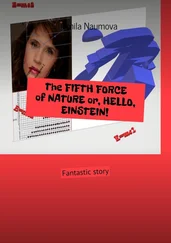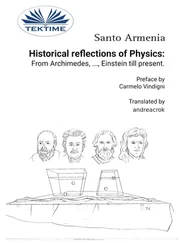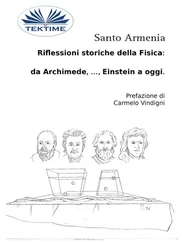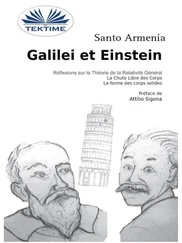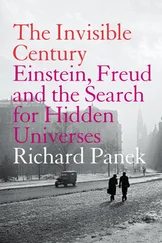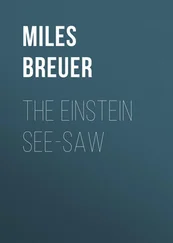Yet, somewhere along the twisted path of his professional and academic career, he had stumbled into experimental particle physics, perhaps the most overorganized and team-oriented form of experimental science. He did not really mind working with a thousand other people, harnessed together to build and milk data from the largest, most expensive, and most complex experimental hardware in the history of the human race. But every day he endured the frustrations of having to work with a group, unable to make decisions and take actions without consulting others, touching the proper bases.
Loners, no matter how good, did not make much of a splash in experimental particle physics. Loners were not the stars of the field, the guys who went to Stockholm to collect the Nobel prize when their group discovered something spectacular. It was the operators, the hyperactive organizers who could put together a team of eight hundred physicists and fifteen hundred technicians and could badger everyone into working at maximum output for three or four years who rose to the top and got the glory and acclaim.
People like Jake Wang, the spokesman and leader of George’s group at the SSC, the Chinese wild man who offended everyone and was the butt of more jokes than George could count, people like Jake got the acclaim. Somehow he always managed to understand the physics a few microseconds before anyone else in the room and to push hard in the right direction before anyone else had decided what the right direction was. George and Jake had been graduate students working together at the SLAC laboratory in California long ago.
Jake had been a very green graduate student then, his English not very good, his physics ideas off-target, his behavior in confrontations tending toward overt hostility. While George had followed his own planned course with reasonable success, he had watched and noticed as Jake had transformed himself, asking subtle questions in private and remembering the answers, working hard until he became an articulate speaker, demonstrating a consummate mastery of the physics literature, learning to argue and convince without offending, learning how to tell other people what to do and have them do it. A year after George had gone to CERN, Jake had left SLAC with a reputation as the most promising new Ph.D. in experimental particle physics. He had gone on to a good postdoc, a better faculty appointment, and to Jake-initiated research that by a stroke of luck had made quite a splash and had led to his becoming spokesman for the LEM collaboration at the SSC. Jake was probably headed for a Nobel prize. The LEM group would earn it, and Jake would collect it.
George, as a group leader in LEM, was probably as high as he would ever go in the hierarchy of high-energy physics. LEM would be his last experiment. For the next twenty years he could look forward to grinding out data, solving technical problems, doing good physics in harness with a thousand others.
But, dammit, he wasn’t here to think about Jake. He had a free Sunday to enjoy the Swiss and French Alps, and he was going to take advantage of it. He would paraglide until the thermals died and then land beside his rental car in the Crozet parking lot.
Soon enough he would have to return to the dead-flat plains of Central Texas, where the Superconducting Super Collider threaded through its circular fifty-three-mile tunnel carved into the limestone stratum of Austin Chalk, where the LEM detector lay deep in an underground cavern, there presided over by Jake Wang like a great dragon guarding his hoard.
When the signal from the summoning appliance arrived, Tunnel Maker was feeling homesick for his clan-herd. Through the transparent station wall he saw the Makers’ Sun, appearing as no more than a very bright star at this distance. An optical enhancer would be required to make his home planet visible.
It was a great honor to be Creator of Bridges, but that honor carried with it the necessity of living in this lonely cometary cloud outpost at the outermost fringes of the great gravity well of the Makers’ Sun. In three more orbits he would be able to return to his home planet.
Responding to the signal, he budded a wall aperture, waited while it dilated, and floated through the opening and into the passage. The signal had interrupted his transtemporal meditation linkage with home and produced a dull ache in his occipital orbs. He flowed along the curving passageway. The summoning appliance, he thought, had probably been activated by a false initiator. It had happened before. For the three orbits he had held his present position every such initiation had been a false one.
When he reached the equipment enclosure, he addressed the data station, interrogating its status indicators and accessing the neural nodes. The stored data began to flow into his sensorium. He turned the emerging patterns to orthogonalize them and paused to contemplate their meaning. Then he flowed backward in delight and wonder.
His long period of waiting was over. Here, at last, was a true find! The extradimensional scanners had actually detected a sequence of enormous nucleus-scale concentrations of energy in one of the neighboring Bubbles. The concentrations were very close in time, and any one of them would have been large enough to establish a Bridge.
Tunnel Maker’s feeling of depression lifted. He would at last be able to do the work he had been trained to do. If all went well, he would be able to construct a Bridge, contact a new civilization, and exchange information and culture with them. New intellectual riches would flow from the contact, to be enjoyed by every Individual of the race of Makers. It would be a great contribution, and it might allow his return to the home world very soon.
This was important news. It was a true find, the first discovery of intelligence in another universe in two dozen orbits. Tunnel Maker paused. Should he call for the assembly of the Concantation of Individuals immediately, communicate the discovery, and secure the needed resources for attempting contact? No, he decided, he must be more cautious. He would lose considerable status if he called together the Concantation, only to have it revealed subsequently that some natural event or malfunction had produced the signal. First he must be very sure, must perform a careful review of the evidence. Then he must eliminate absolutely the possibility of a detector malfunction. He linked through one of the neural nodes to his sensorium.
The sensory representation displayed the time stream of data from the candidate Bubble. There was an irregular succession of marginally significant clusters of ultra-high-energy concentration. These came systematically from the same coordinates within the candidate Bubble. The time pattern seemed random, sometimes off, sometimes on, but taken as a whole it was clear that the peaks of intensity and their frequency of occurrence had both been increasing with time. The single ultra-high-energy event that had triggered the summoning appliance had been large indeed and represented an energy density many orders of magnitude larger than a thermonuclear explosion or supernova. But after that triggering event, the subsequent signals had tapered off and now had stopped altogether.
Tunnel Maker paused to consider the evidence. Was there any possibility that this observation could be the result of some natural phenomenon in the neighboring Bubble? An active galactic nucleus, perhaps, or a pair of neutron stars or black holes orbiting toward merger? The neural circuits of the initiator had been trained to eliminate such irrelevant phenomena, but there was the possibility that they had been confused.
He reviewed the data. First, the transdimensional wavelengths indicated that the concentration of energy was tightly localized, of approximately the size of a proton. That argued against a phenomenon of stellar, neutron star, or black hole dimensions. Second, the energy was definitely positive rather than negative, eliminating the possibility that the Bubble of interest was an inaccessible antimatter time-reversed universe. Third, the phenomenon repeated again and again at essentially the same general coordinates, but primarily at two specific points within those coordinates. That argued against some phenomenon involving ultra-energetic cosmic rays. And fourth, the intensity pattern showed a tendency to increase irregularly and then halt, as if some tuning and improvement process were in progress. It was difficult to imagine any astrophysical catastrophe that could simultaneously be so energetic, so localized, and so repetitive.
Читать дальше





